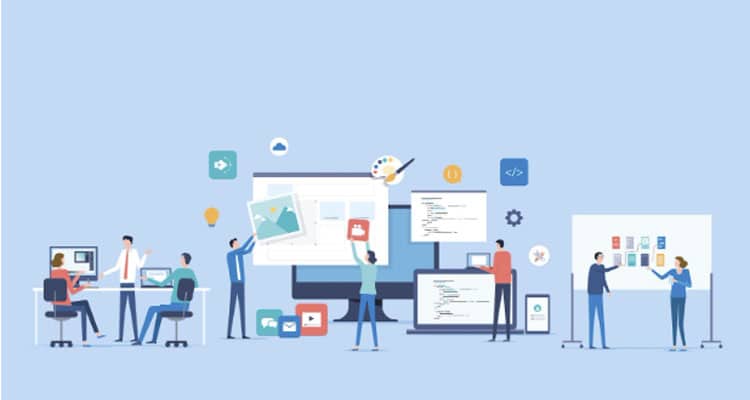6 Key Workplace Optimisation Strategies to Help You Adapt To The Digital Age

There’s no doubt that we’re living in the digital age. Adapting high-tech solutions is a must for any business. In order to successfully transition to more digital ways of working, however, it’s essential to formulate cohesive workplace optimisation strategies. This requires taking stock of the issues your business is currently facing and figuring out what solutions are out there.
If you’re planning for a digital future and seeking some guidance, you’re in luck. In this article, we’ll give you 6 key workplace optimisation strategies to help you adapt to the digital age and take your business to the next level.
- Acquire the necessary software
These days, businesses are spoilt for choice when it comes to finding helpful tech tools that can solve specific problems. For instance, employees can manage files much more efficiently with a PDF converter, which allows them to download documents into more edit-friendly layouts, before uploading them again to a cloud software or file-sharing network in a professional format.Graphic designers or even business owners on a budget can employ easy-to-use (and sometimes free) programs like Photoshop to create high-quality images, logos and social media reels to captivate key audience demographics and turn them into customers.
However, just because a particular tool exists doesn’t mean you should automatically acquire it. Most tech solutions cost money, so you need to be strategic about which you choose to invest in. When making these decisions, it’s always a good idea to have conversations with the employees who’ll be using them most. By taking their preferences into account, you can make sure that you’ll only be spending money on solutions that address concrete pain points.
- Create an overarching strategy
There’s an old saying that goes: ‘If you fail to plan, you plan to fail.’ When making the transition to more digital processes, it’s essential to come up with an overarching strategy to make sure that individual departments aren’t acting as disconnected units.The decision to become a more tech-oriented company should come from the leadership team, who can develop a digital strategy for marketing efforts, data analytics processes and so on. They should then make sure that managers up and down the chain of command are committed to enforcing this agreed upon vision.
Among the biggest benefits of adopting a company-wide digitisation strategy is that this organised approach ensures the business doesn’t run out of money during the unfolding upgrade. It can be tempting to invest in more and more tools without sparing a thought for budget limitations. Crafting an overall plan makes it easier to transition to the digital age sustainably.
- Invest in employee training
A business is only as good as the people that run it. It’s useless to invest in the most high-tech pieces of equipment if nobody knows how to use them. So, corporate training and strategic management is essential to achieve your goal of digitisation.There are several ways to go about training your employees, and you’ll probably need to use a mixture of methods. Consider running workshops, investing in online courses and implementing a mentorship program in which more knowledgeable or specialised employees can teach their peers. By educating your team, you can make the most of all the tech you buy for your business – and get the most out of your staff.
- Implement artificial intelligence correctly
Artificial intelligence is a hot topic, and it’s not hard to see why. AI is now implemented in cybersecurity, data analysis, content generation and web design, amongst many other business facets. As you might imagine, the possibilities are endless when it comes to using AI-powered tools to improve operational processes.However, it’s important to use AI in the right ways. As a general rule of thumb, all AI programs should have some level of human oversight. While tools like ChatGPT and Claude are impressive for concept production and execution, they’re certainly not perfect. By checking their outputs, you can avoid potential issues like publicising false information and having content penalised by search engines for being demonstrably AI-generated.
- Practice digital communication
Technology has transformed the way we talk to each other. Channels like instant messaging platforms and video messaging tools dominate day-to-day communication, both in and outside of workspaces. As a business leader, you’d be remiss not to invest in digital communication tools to enhance the efficiency of your company and facilitate easier networking in real-time and beyond geographical limitations.Some tools to consider include workplace messaging platforms like Slack and business-focused email apps like Microsoft Outlook. Take time to understand the needs of your team and invest in communication technology accordingly. As the workforce continues adapting to the rise of remote work, it’s important to facilitate seamless communication even when your employees are not sharing a physical workplace.
- Upgrade hardware in your workplace
Software is useless without hardware. If you want to create a truly modern workplace, you need to furnish your office or venue with the equipment your colleagues need to use the cutting-edge software you’ve invested in.At the very least, each employee should have access to a laptop or PC. This might be their own device that they bring from home or a company device you provide them. You can also invest in accessories like ergonomic mice and portable keyboards to improve their working experience and comfort. Some other hardware to consider include adapters, smart TVs and noise-cancelling headphones.
To truly transition to a high-tech workspace, it’s essential to have both high-quality software and capable hardware. By equipping your team with the best, modern devices, you can maximise their potential and drive your business forward.
Prepare your Enterprise for the Digital Age
In the digital industrial age, global business landscapes are naturally becoming more competitive. Decision-makers need to make use of every possible avenue for improvement. In today’s digital age, this involves investing in high-tech software and equipment that can improve the efficiency of your team.
To successfully adapt to the digital age, it’s essential to implement the optimisation strategies we’ve just covered. Introduce a couple in your workplace today and gradually roll out the rest to future-proof your business.
Have you read?
Longest and Shortest Life Expectancies in the World.
World’s Most And Least Stressed Countries.
Best cities in the world.
Largest Economies in the World by GDP (PPP).
Largest Asset Owners In The World.
Bring the best of the CEOWORLD magazine's global journalism to audiences in the United States and around the world. - Add CEOWORLD magazine to your Google News feed.
Follow CEOWORLD magazine headlines on: Google News, LinkedIn, Twitter, and Facebook.
Copyright 2025 The CEOWORLD magazine. All rights reserved. This material (and any extract from it) must not be copied, redistributed or placed on any website, without CEOWORLD magazine' prior written consent. For media queries, please contact: info@ceoworld.biz








